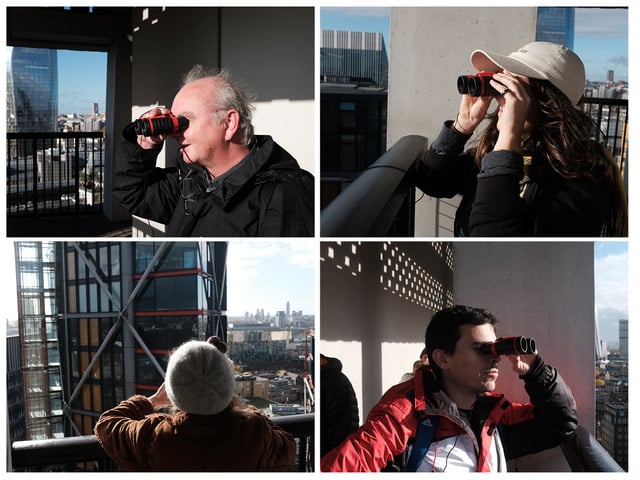Art World
Tate Modern’s Angry Neighbors Lose Their Legal Battle Over Museum Visitors Peeping Into Their Apartments
The upset residents wanted to screen off part of the museum’s popular viewing platform claiming invasion of privacy.

The upset residents wanted to screen off part of the museum’s popular viewing platform claiming invasion of privacy.

Javier Pes &
Naomi Rea

Visitors will continue to enjoy panoramic views of London from Tate Modern’s Blavatnik Building, including close ups of nearby luxury flats, after five residents lost their legal battle to screen off part of the balcony on the 10th story.
A Tate spokesman says: “The Level 10 Viewing Platform is an important part of Tate Modern’s public offer and we are pleased it will remain available to our visitors,” adding that it would continue to be “mindful” of its neighbors. There is a sign asking visitors to “respect our neighbors’ privacy” but for the upset residents a notice is insufficient and their battle continues.
Their lawyer, Natasha Rees of Fosters, said in a statement that they are now considering whether to appeal the High Court judge’s decision. “The limited steps taken by the Tate to prevent visitors viewing into my clients’ apartments are ineffective and both my clients and their families will have to continue to live with this daily intrusion into their privacy.”
Disappointed at the decision, the residents of the flats were not impressed by the gallery’s advice to install blinds or curtains. Their lawyers argued in court that when left open photographs are often taken of the insides of the flats and their occupants, with many of them subsequently shared on social media. “Residents with children have been particularly badly affected,” they added in a statement.
Tate Modern first unveiled the design of its expansion in 2009, promising “incredible views.” Little did anyone expect then that these would include glimpses of the domestic lives of people who bought neighboring apartments built during its construction. The flashy Herzog and de Meuron-designed tower opened in 2016 while the Neo Bankside development, designed by Richard Rogers, opened in 2012. Many of its luxury apartments, which can cost up between $2.5 million to $24 million, enjoy their own panoramic views.
The residents first launched their suit in 2017, claiming nuisance and breach of privacy under the Human Rights Act. The case has since became so well known to museum visitors that one mischievous artist, Max Siedentopf, decided to install binoculars on the viewing platform in November last year. Ostensibly an homage to Tate’s “most popular” exhibit, the move served only to further antagonize the beleaguered neighbors.